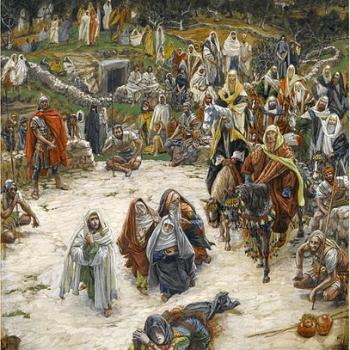
The Church celebrates the feast day of one of the most popular saints of our times, St. Therese of Lisieux, on October 1. She was dubbed by Pope Saint Pius X the “greatest saint of modern times,” and her legacy and spiritual teachings live on in the multitude of Christians who follow her “Way of Spiritual Childhood” or her “Little Way.” On October 19, 1997, Pope John Paul II declared St. Therese a Doctor of the Church in honor of the sublimity of her spiritual teachings and her example of holiness. Among the many beatifications and canonizations which took place during his pontificate, the Pope bestowed the honor of Doctor on only one saint, the Little Flower of Lisieux.
St. Therese promised that after her death she would “let fall a shower of roses,” and that her mission would truly begin after her death, when she would assist those still on earth. Since her death on September 30, 1897 and her canonization on May 17, 1925, countless Christians have been influenced by her life and writings, including several individuals who were subsequently beatified or canonized themselves. Three of these saints who adopted the spirituality and example of St. Therese were St. Teresa of the Andes, Blessed Cecilia Eusepi, and Saint Teresa of Calcutta.
In 1900, a girl was born who would subsequently walk a similar path to St. Therese, inspired by her predecessor’s life and holiness. Juana Fernandez Solar, or “Juanita,” as she was known to her friends, read the Autobiography of St. Therese of Lisieux, the Story of a Soul, as a young girl in Santiago, Chile. Inspired by St. Therese’s singular love for God and her devotion, Juana entered Carmel at age 19 and lived her short life in prayer and sacrifice, also taking the name of Teresa. Like Therese, St. Teresa of the Andes experienced an interior conversion at a young age and, through a life of piety and virtue, rose to the heights of sanctity as a Carmelite nun. In her diary, she wrote, “I am God’s. He created me and is my beginning and my end.” She died at age 20 after a bout of typhus and was canonized on March 21, 1993 by Pope John Paul II.
Another holy woman whose life paralleled that of St. Therese was Blessed Cecilia Eusepi. Born in 1910 in Monte Romano (Viterbo). Upon her father’s death, she and her mother moved to Nepi, where she began instruction and spiritual formation with the Cistercian Nuns. She became a member of the Third Order of the Servants of Mary. Aspiring to become a missionary, her hopes were not able to be realized when she contracted tuberculosis and died at age 18 on Oct. 1, the feast day of St. Therese. During her life, she was known for her piety and devotion to Jesus, Mary, and the Little Flower, and she composed her own diary, which she humorously entitled “The Story of a Clown.”
Mother Teresa of Calcutta also chose the name of “Teresa” in honor of the Little Flower and her doctrine of doing small things with great love. She strove to imitate St. Therese’s love for Jesus and for others. Both saints declared their intention to live out their vocation with love as the heart of their mission, St. Therese in her Carmelite cloister in Lisieux, France, and Mother Teresa in the slums of Calcutta serving the poorest of the poor. Like St. Therese, Mother Teresa considered herself an instrument in the hand of Jesus, which he used to convey his love and mercy to all she encountered.
The “greatest saint of modern times” has truly made her mark upon the Church and the world. In her “Little Way,” laid out in her diary, The Story of a Soul, she paved the way for Christians everywhere to aspire to and reach the heights of holiness. In a sense, she rediscovered the gospel and left the Church with directions to a sure and simple path to sanctification. She has inflamed the hearts of these three saints and so many others, and continues to “let fall a shower of roses,” or spiritual favors, as she promised during her short life on earth.
(Image by: Dorothee Quennesson from Pixabay)















